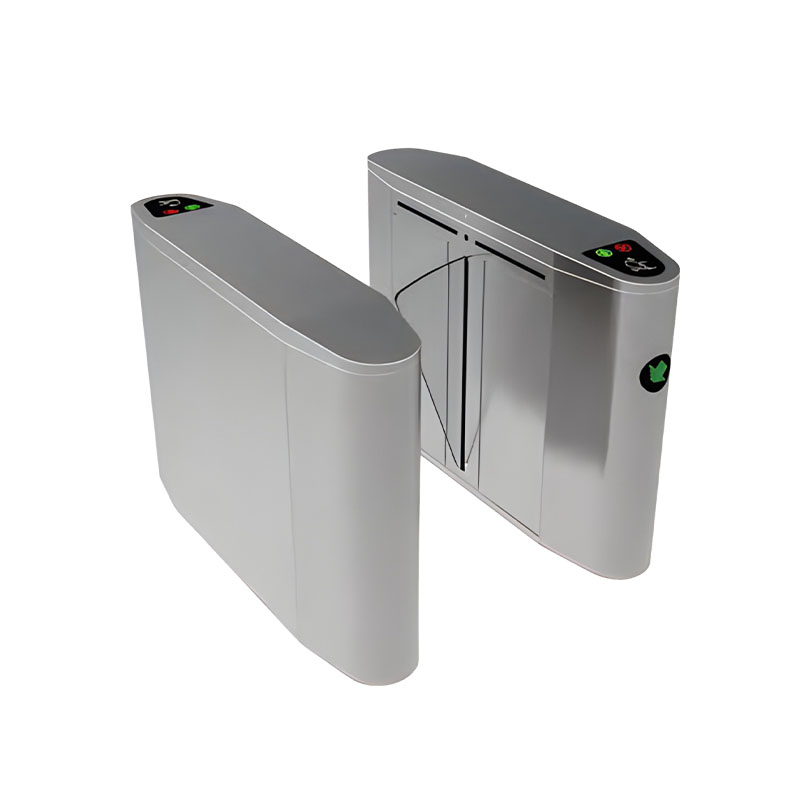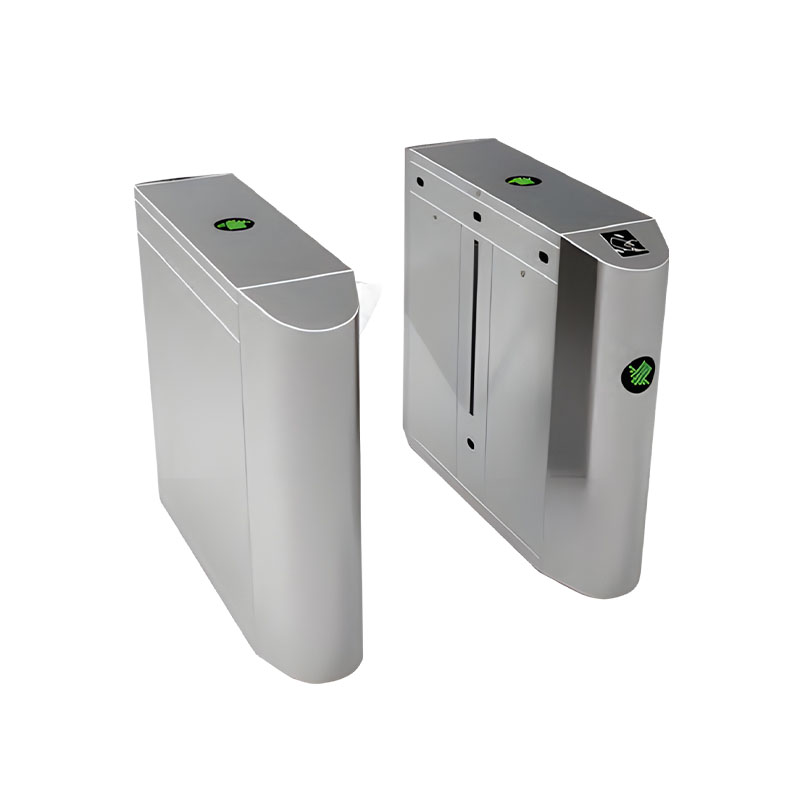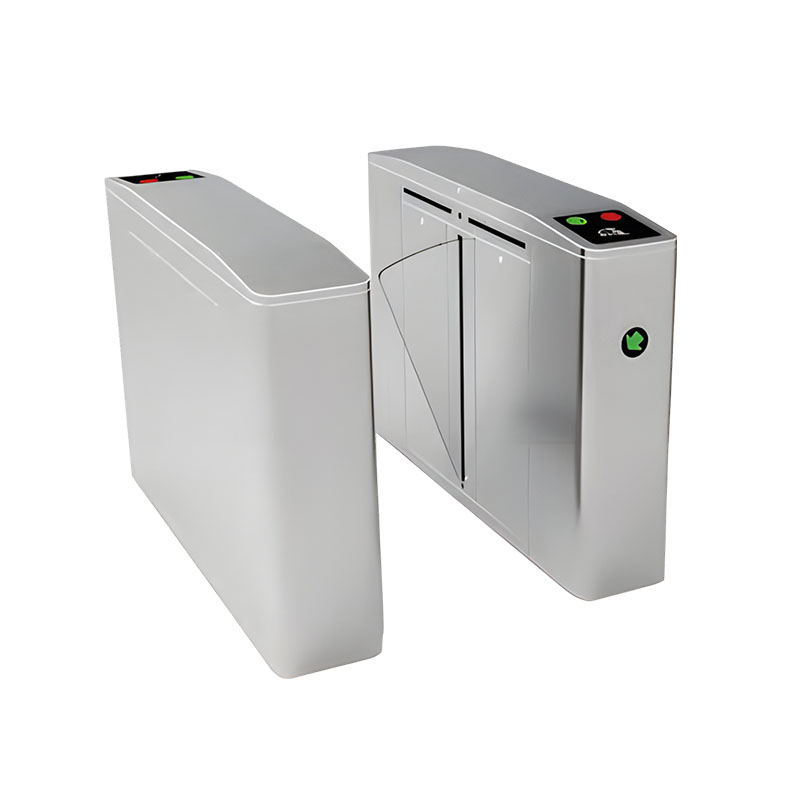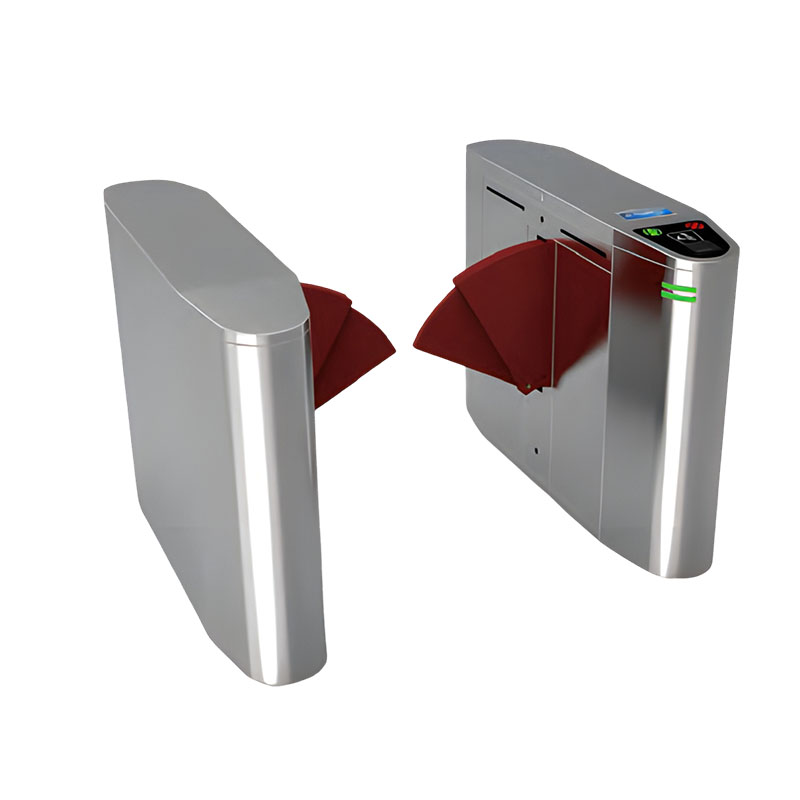How do pedestrian access gates become guardians of worry-free passage?
Release Time : 2025-11-03
In the context of modern cities and smart buildings increasingly pursuing safety, efficiency, and order, pedestrian access gates (also known as pedestrian access control systems or turnstiles) have quietly become "invisible gatekeepers" in airports, subway stations, office buildings, campuses, industrial parks, and even high-end communities. They are not only physical barriers but also intelligent security terminals integrating identity recognition, access control, data management, and emergency response. With precise access logic and user-friendly interactive design, pedestrian access gates are safeguarding the security boundaries of every controlled space with a "worry-free" approach.
1. Intelligent Recognition for Efficient Passage
Traditional access control relies on manual verification, which is inefficient and prone to errors. Modern pedestrian access gates deeply integrate multiple verification methods such as facial recognition, QR code scanning, NFC card swiping, ID card reading, and even palm vein recognition. Users only need to "scan their face" or lightly touch their mobile phone, and the system completes identity verification within milliseconds and automatically opens the gate wings or swing arms. During peak subway hours, high-performance speed gates can process over 30 people per minute, significantly alleviating congestion. In corporate parks, employees can pass through seamlessly, eliminating the embarrassment of forgetting their employee ID cards. This "leaves no trace, yet verification is precise" experience is the core value of smart access control.
2. Multiple Protections to Eliminate Security Vulnerabilities
Security is fundamental to turnstiles. To prevent tailgating—that is, multiple people following after one person's verification—high-end turnstiles are equipped with multiple pairs of high-precision infrared sensors to monitor the number and location of people in the passage area in real time. Once unauthorized entry or reverse passage is detected, the gate immediately closes and triggers an audible and visual alarm. Some products even incorporate AI visual algorithms, using cameras to analyze human posture and movement trajectories to intelligently distinguish between normal passage and abnormal behavior. Simultaneously, the turnstile structure employs an anti-collision design: swing gates automatically rebound upon encountering obstruction, and wing gates have flexible buffers, ensuring safety while preventing injury to the elderly and children.
3. Emergency Response, Safeguarding Lifelines
Safety extends beyond daily management; it is also reflected in reliable response in emergencies. All pedestrian access gates compliant with fire safety regulations are equipped with an automatic power-off release mechanism. In the event of a fire or power outage, the gate instantly switches to the "normally open" state, ensuring unobstructed evacuation routes. Furthermore, the system can be linked to the building's fire alarm platform, unlocking in advance upon receiving a fire alarm signal, buying precious seconds for escape. This dual logic of "strict control in normal times, unobstructed access in emergencies" reflects technology's respect for life.
4. Robust and Durable, Adaptable to Diverse Scenarios
From outdoor scenic area entrances under the scorching sun to underground subway tunnels in damp conditions, pedestrian access gates must withstand various environmental challenges. Mainstream products use 304 or 316 stainless steel bodies with a brushed finish that combines corrosion resistance with industrial aesthetics; the core motor and control system are certified with IP54 or higher protection levels, providing dust and water resistance and ensuring long-term stable operation. For accessibility needs, many locations also feature wide-lane swing gates or dedicated accessible turnstiles, supporting smooth passage for wheelchairs and strollers, demonstrating humanistic care.
1. Intelligent Recognition for Efficient Passage
Traditional access control relies on manual verification, which is inefficient and prone to errors. Modern pedestrian access gates deeply integrate multiple verification methods such as facial recognition, QR code scanning, NFC card swiping, ID card reading, and even palm vein recognition. Users only need to "scan their face" or lightly touch their mobile phone, and the system completes identity verification within milliseconds and automatically opens the gate wings or swing arms. During peak subway hours, high-performance speed gates can process over 30 people per minute, significantly alleviating congestion. In corporate parks, employees can pass through seamlessly, eliminating the embarrassment of forgetting their employee ID cards. This "leaves no trace, yet verification is precise" experience is the core value of smart access control.
2. Multiple Protections to Eliminate Security Vulnerabilities
Security is fundamental to turnstiles. To prevent tailgating—that is, multiple people following after one person's verification—high-end turnstiles are equipped with multiple pairs of high-precision infrared sensors to monitor the number and location of people in the passage area in real time. Once unauthorized entry or reverse passage is detected, the gate immediately closes and triggers an audible and visual alarm. Some products even incorporate AI visual algorithms, using cameras to analyze human posture and movement trajectories to intelligently distinguish between normal passage and abnormal behavior. Simultaneously, the turnstile structure employs an anti-collision design: swing gates automatically rebound upon encountering obstruction, and wing gates have flexible buffers, ensuring safety while preventing injury to the elderly and children.
3. Emergency Response, Safeguarding Lifelines
Safety extends beyond daily management; it is also reflected in reliable response in emergencies. All pedestrian access gates compliant with fire safety regulations are equipped with an automatic power-off release mechanism. In the event of a fire or power outage, the gate instantly switches to the "normally open" state, ensuring unobstructed evacuation routes. Furthermore, the system can be linked to the building's fire alarm platform, unlocking in advance upon receiving a fire alarm signal, buying precious seconds for escape. This dual logic of "strict control in normal times, unobstructed access in emergencies" reflects technology's respect for life.
4. Robust and Durable, Adaptable to Diverse Scenarios
From outdoor scenic area entrances under the scorching sun to underground subway tunnels in damp conditions, pedestrian access gates must withstand various environmental challenges. Mainstream products use 304 or 316 stainless steel bodies with a brushed finish that combines corrosion resistance with industrial aesthetics; the core motor and control system are certified with IP54 or higher protection levels, providing dust and water resistance and ensuring long-term stable operation. For accessibility needs, many locations also feature wide-lane swing gates or dedicated accessible turnstiles, supporting smooth passage for wheelchairs and strollers, demonstrating humanistic care.
5. Data-Driven, Building a Smart Ecosystem
Every passage is a data interaction. The turnstile system can upload access records, pedestrian flow, and abnormal events to the management platform in real time, helping managers optimize scheduling, provide early warnings of risks, and trace activity. In smart parks, turnstile data is deeply integrated with visitor appointment, attendance, and video surveillance systems, forming a closed-loop security system encompassing people, events, and things.
Pedestrian access gates have long transcended the simple functions of "blocking" and "allowing," evolving into a modern space management tool that integrates safety, efficiency, intelligence, and human touch. They are unassuming yet steadfast; they are unassuming yet silently protect. In the bustling urban fabric, it is these "guardians of worry-free passage" that ensure peace of mind with every entry and exit, maintain order in every space, and truly allow smart living to take root.







